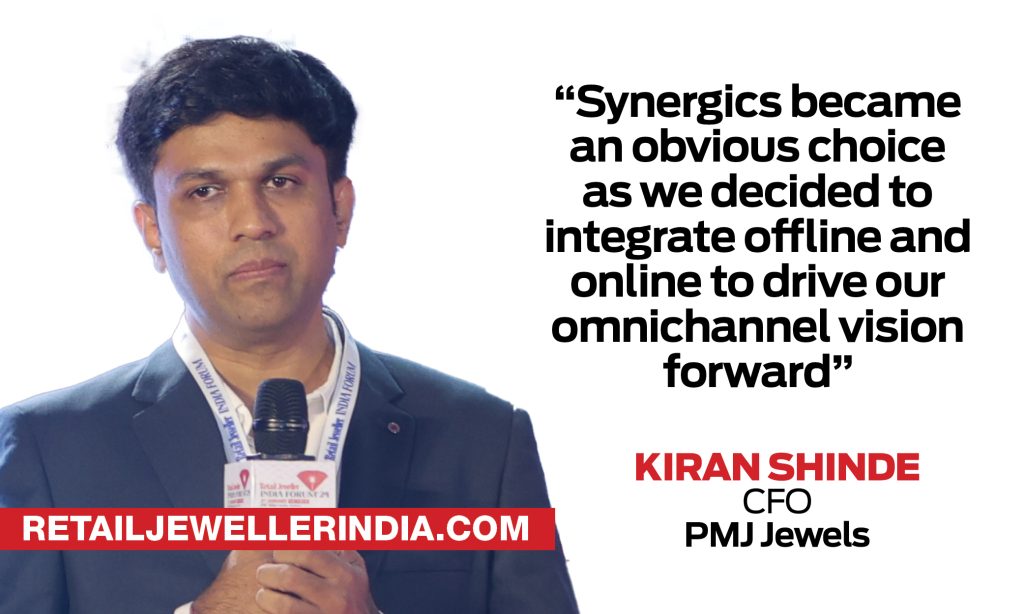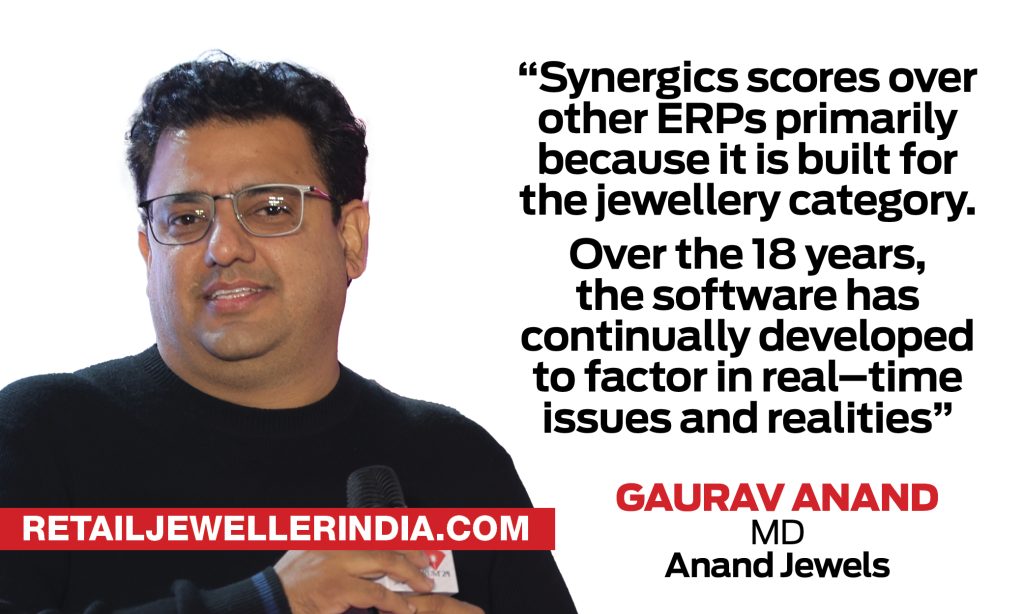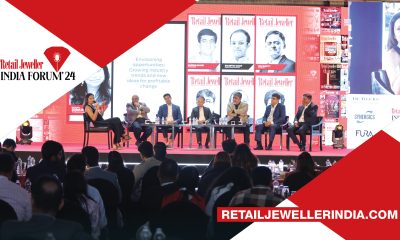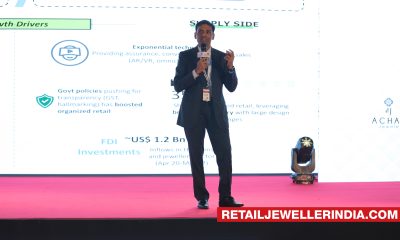Cover Feature
#RJIF2024: With the correct information, a retailer wins half the battle

Vivek Das, founder of Synergics Solutions, talked about tech-supported lag indicators and lead indicators, explaining how constant assessment of sales and profit won’t reveal room for improvement in a company. Instead, one must focus on lead indicators such as design details, pricing, procurement, and customer experience
Armed with the right information, a retailer can win half the battle for business expansion, said Vivek Das, Founder of Synergics Solutions, at his session titled ‘Technology Transformation: Integrating technology deployment with change management for holistic tech adoption within the organization’ at the Retail Jeweller India Forum 2024.

In 18 years, Synergics has spread across seven countries and has close to 20,000 users, Das mentioned. “Starting with our omni-channel and e-tail partners, Caratlane had four stores when they adopted Synergics Solutions. They have 250+ stores now. Candere started online, went to omnichannel, and now has franchise partners. Angara e-commerce runs a supply chain wherein they create moulds in one country, set diamonds in another country, and sell the finished piece in LA.
Browns have also grown from six stores to 52 stores in South Africa and 10 in the UK,” said Das, as he shared names of many independent retail partners in India, such as The Diamond Factory, Ratnalaya Jewellers, Lagu Bandhu, Hazoorilal by Sandeep Narang, Hazoorilal Legacy, PMJ Jewels, Kalamandir Jewellers, Talla Jewellers and more. Das stated that Synergics’ tech stack enables brands to grow with the technology they adopt and not stay dated with the same process forever. He talked about how generic ERP has to be customised, unlike Synergics ERP, which is built specifically for the jewellery category and has evolved over the last eighteen years based on practical issues and intelligence gathered from usage.

Transformation, expansion, operational efficiency and customer focus are the current challenges in the jewellery business. Das urged the jewellery industry to start assessing several vital parameters such as SKU level bill of material-wise cost and profitability, vendor-wise contribution to profit, SKU-level cost comparison of the same designs from different vendors, selected item by a customer but not bought, and decision to procure jewellery. He advised jewellers to have a smooth ledger to facilitate multiple touchpoints for consumers as per their choices.
According to Das, sales and profit are lag indicators because their constant assessment won’t reveal room for improvement in a company. Instead, one must focus on lead indicators such as design details, pricing, procurement, outsourcing, and customer experience. He adds that one must integrate people, processes, products, and technology in several steps.
“The impact of all these lead indicators are 5-10% less inventory to achieve the same sales, Rs 1-10 crore savings in manpower, 20% more conversions, and no fraud,” he said.
As per their internal client data assessment, analysing these lead indicators, a brand can also experience a 29% increase in sales through CRM, aid expansion, a 34% increase in sales productivity, and a 42% increase in sales forecast accuracy. Talking about the benefit of technology, he explained, “When you correctly define every bill of material, you can reduce stock levels by 5-10%. You’ll get the right designs from the right vendors. You’ll have specific sales analytics of designs and their components and improve stock turnaround time. Retailers will always have the best-selling designs available on their counters. With such information, the vendor showing any design will be attended by the category manager who will assess the feasibility of the design in relation to existing consumer behaviour.”

Showcasing a consumer dashboard of Synergics, Das highlighted the many criteria one must assess before, during and after a transaction is done. Customer experience is beyond transactions, and a retailer with access to customer data must start the relationship before commerce by capturing lost opportunities, last interactions, item preferences, and several other parameters. “At any time of the day, your customer relationship management team must have access to these pieces of information to guide customers realistically. One must also record customer preferences so that in the absence of a particular staff, the remaining team can be sufficiently equipped to serve the same customer if they return to the store for a purchase,” maintained Das.





 Wide Angle1 month ago
Wide Angle1 month agoIndia has overtaken China to become second largest diamond market: De Beers CEO Al Cook

 Daily News1 month ago
Daily News1 month agoUS-based private equity firm Advent International to acquire Orra Fine Jewellery, say media reports

 Wide Angle1 month ago
Wide Angle1 month agoEminent jeweller Viren Bhagat sets up first global boutique in London’s Mayfair

 Daily News1 month ago
Daily News1 month agoLimelight Lab Grown Diamonds secures $ 11 million in funding to fuel its retail growth























